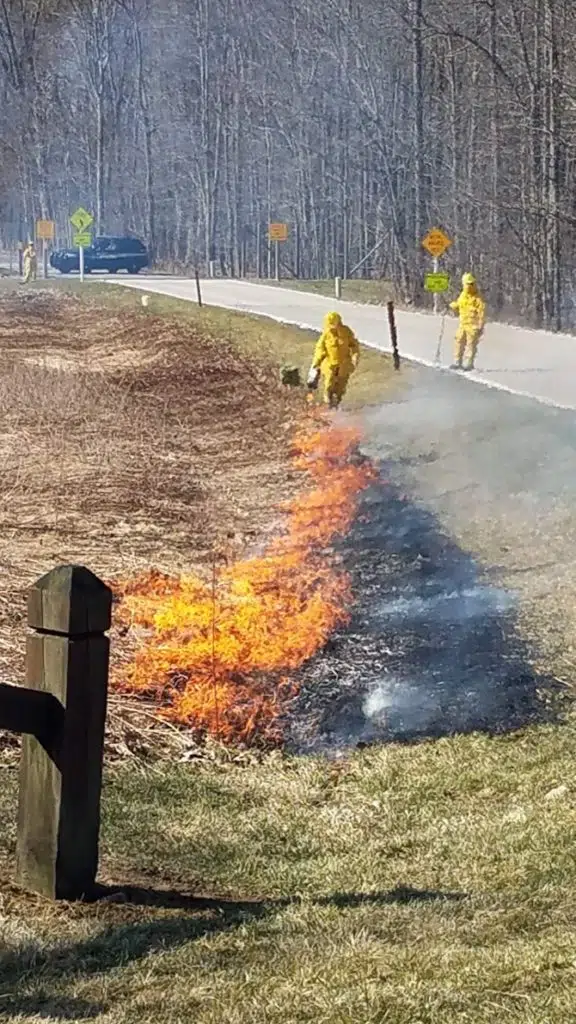
Probably one of the most exciting things that we do every spring here at the Arboretum is a prescribed burn. Prescribed burns are basically planned fires that are used to help manage our prairies and meadows. Fire helps to maintain these areas by suppressing non-prairie plants. It also clears dead plant material and adjusts the nutrient balance in the soil in favor of prairie vegetation. After a burn, the blackened soil absorbs sunlight, which warms the soil and favors the regrowth of heat-loving prairie plants and allows them a competitive edge over non-prairie species.

Additionally, some plants have adapted to living with fire and need the high temperatures for their seeds to break dormancy and germinate. After a burn, we typically have a greater showing of these pyrogenic species. We only burn a small portion of the grasslands we are managing to maintain consideration for the insect populations that may be overwintering as larvae or eggs in the stems of the previous year’s grasses and forbs.

As you can probably imagine, burning a few acres of dry plant material is a rather dangerous undertaking and takes much consideration and planning. The process starts in January every year with permit writing. These permits lay out the location and objectives of the burn and are submitted to the Lake County Health Department. Once they are approved by the Health Department, burn permits are issued for each specific location on the property and then those permits are brought to the Kirtland Fire Department for review and final authorization by the Chief. Once we have his approval, we are able to implement our burns.

The morning of the prescribed fire, we check site conditions to determine if the type of material we are aiming to burn is dry enough. This assessment helps us determine what fuel ration is best to ignite and maintain a fire. Then we assess wind conditions, relative humidity, and overall temperature. If conditions are just right, then we burn. If not, we wait until another day. Monday, March 22nd, conditions were perfect, and we burned the Myrtle S. Holden Wildflower Garden Prairie and the Sugarbush Meadow.



Annie Rzepka
Director of Arboretum Horticulture
Annie began her relationship with Holden Forests & Gardens as a volunteer in 1997 and was thrilled to be hired 10 years later as the horticulturist for the Myrtle S. Holden Wildflower Garden. Annie acted as the state lead to collect seed and establish habitat for pollinators on behalf of the Pollinator Partnership and worked to help preserve rare and endangered plant species through her work with the Center for Plant Conservation.













